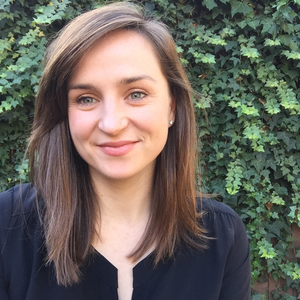
Jessica Selinger
Associate Professor
Biomechanics and Motor Control, Neuromechanics
PhD (Simon Fraser University)
MSc (Queen’s University)
BSc (Queen’s University)
Cross-Appointed to the Department of Mechanical and Materials Engineering
Undergraduate Courses
KNPE 254 – Biomechanical Analysis of Human Movement
KNPE 353 – Experiments in Neuromechanical Kinesiology
KNPE 453 – Locomotor Neuromechanics
Research Summary
I am interested in the fundamental principles that shape how and why we move the way we do, as well as the application of these principles to improve mobility and overall health. To do so, I combine theoretical modelling, lab-based experiments, and data-driven approaches to study human locomotion and learning. In particular, I seek to understand the neuromechanical control of human walking and how it is adapted to changing tasks, environments, and bodies. Ultimately, the purpose of my work is to design novel rehabilitative strategies and wearable technologies to aid those with mobility impairments.
Current Research Themes:
- Understanding energetic cost optimization in human locomotion
- Neural mechanisms and models in locomotor learning
- Biofeedback for improved learning and rehabilitation
- Investigating ecological human movement through wearable tech
Graduate Student Opportunities
I am currently accepting new graduate students at the Master’s and PhD level. Successful applicants will be encouraged to apply to the Ontario Graduate Scholarship Program and to the National Sciences and Engineering Research Council of Canada. If you are interested in learning more about graduate opportunities, please feel free to contact me.
Recent Publications
J.C. Selinger, J.D. Wong, S.N. Simha, and J.M. Donelan. How People Initiate Energy Optimization and Converge on Their Optimal Gaits. Journal of Experimental Biology, In Press, 2019.
C. S. Simpson, C. G. Welker, S.D. Uhlrich, R.W. Jackson, S.L. Delp, S.H. Collins, J.C. Selinger*, E. Hawkes*. Connecting the legs with a spring improves human running economy. Journal of Experimental Biology, In Press, 2019. *denotes equal contribution
S.N. Simha, J.C. Selinger, and J.M. Donelan. A Mechatronic System for Studying Energy Optimization. Dynamic Walking. IEEE Transactions on Neural Systems & Rehabilitation Engineering, 27: 1416-1425, 2019.
S.J. Abram, J.C. Selinger, and J.M. Donelan. Energy Optimization is a Major Objective in the Real-Time Control of Step Width in Human Walking. Journal of Biomechanics, 91: 85-91, 2019.
J.D. Wong, J.C. Selinger, and J.M. Donelan. Is natural variability in gait sufficient to initiate spontaneous energy optimization in human walking? Journal of Neurophysiology 121(5):1848-1855, 2019.
J.D. Wong, O’Connor, J.C. Selinger and J.M. Donelan. Contribution of blood oxygen and carbon dioxide sensing to the energetic optimization of human walking. Journal of Neurophysiology 118(2):1425-1433, 2017.
J.C. Selinger and J.M. Donelan. Myoelectric Control for Adaptable Biomechanical Energy Harvesting. IEEE Transactions on Neural Systems and Rehabilitation Engineering 24(3): 364-373, 2016.
J.C. Selinger, S.M. O’Connor, J.D. Wong, and J.M. Donelan. Humans Can Continuously Optimize Energetic Cost during Walking. Current Biology 25: 2452-2456, 2015.
W. Felt, J.C. Selinger, J.M. Donelan and C.D. Remy. ‘Body-in-the-Loop’: Optimizing Device Parameters Using Measures of Instantaneous Energetic Cost. PLoS ONE 10(8), 2015.
J.C. Selinger and J.M. Donelan. Estimating instantaneous energetic cost during non-steady state gait. Journal of Applied Physiology 117(11): 1406-1415, 2014.